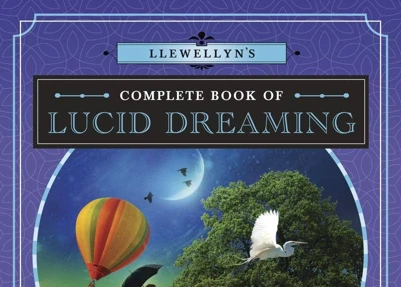Have you ever wondered what it would be like to experience your wildest dreams while being fully conscious and in control? Well, the practice of lucid dreaming can make that a reality. Lucid dreaming is a phenomenon where you become aware that you are dreaming while you are still in the dream state. It opens up a world of possibilities to explore and unleash your creativity like never before. In this article, we will delve into the power of lucid dreaming and guide you through a step-by-step process to unlock your creative potential through this incredible practice. Get ready to embark on a journey into the depths of your imagination and discover the limitless possibilities that await you in the realm of lucid dreaming.
The Power of Lucid Dreaming

Lucid dreaming holds immense power in unlocking the depths of our imagination and tapping into our creative potential. When we become aware that we are dreaming within a dream, we are granted the ability to shape and mold our dreamscapes, allowing us to explore new ideas, experiment with different scenarios, and engage in activities that are limited only by our imagination.
One of the key aspects of the power of lucid dreaming is its ability to enhance problem-solving skills. In a lucid dream, we can confront challenges and obstacles head-on, using our creativity to devise innovative solutions. By practicing problem-solving in the dream state, we can transfer those skills to our waking life, enabling us to think more creatively and come up with unique solutions to real-world problems.
Lucid dreaming also offers a gateway to artistic inspiration. Within the world of a lucid dream, we can encounter vivid and fantastical imagery that can serve as a wellspring of creativity. Ideas and concepts that may seem elusive in our waking life may become more tangible and accessible in the dream state. Artists and creatives can use their lucid dreams as an immersive source of inspiration, bringing forth new ideas and perspectives that can inform their creative work. For further information on exploring lucid dreaming as a source of artistic inspiration, check out our article on exploring lucid dreaming for artistic inspiration.
Beyond problem-solving and artistic inspiration, lucid dreaming allows us to tap into our potential for personal growth. By engaging in lucid dreams, we can unlock the ability to overcome creative blocks that may hinder our progress. Through lucid dreaming, we can confront and explore the underlying fears and self-doubts that may be holding us back in our creative endeavors. This self-awareness and introspection can be transformative, enabling us to push past our limitations and unlock our true creative potential.
The power of lucid dreaming extends to the realm of skill refinement and practice as well. Studies have shown that practicing skills in the lucid dream state can lead to improvements in performance in waking life. Athletes, musicians, and artists can utilize lucid dreams to engage in focused practice sessions, honing their abilities and perfecting their techniques. It allows for a unique and immersive form of practice, free from the constraints and limitations of the physical world. To learn more about how lucid dreaming can enhance skill refinement, read our article on how lucid dreaming can enhance artistic potential.
The power of lucid dreaming is truly awe-inspiring. It opens up a world of possibilities for creativity, problem-solving, artistic inspiration, and personal growth. As we continue our journey through this article, we will explore the steps to unlock and harness the power of lucid dreaming, allowing you to awaken your creativity and tap into the limitless potential of your dream world.
Step 1: Establishing Dream Recall
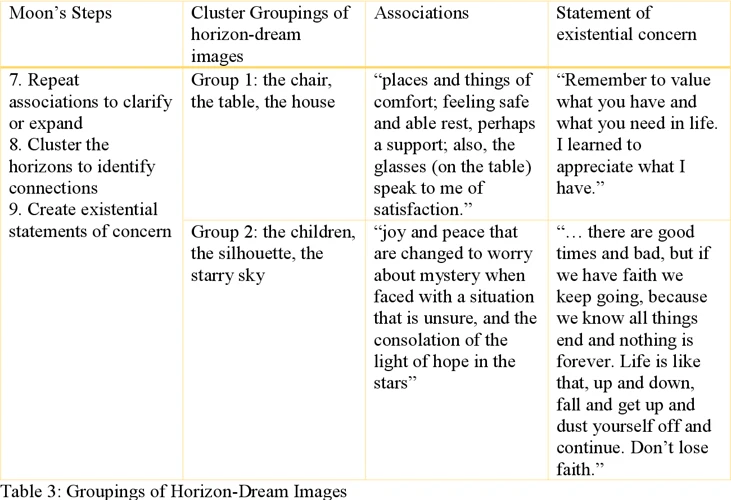
Establishing dream recall is an essential first step in embarking on the journey of lucid dreaming. By improving our ability to remember our dreams, we lay the foundation for becoming aware of our dream state and subsequently unleashing our creativity within it.
There are several techniques that can help enhance dream recall:
- Keep a dream journal: A dream journal serves as a dedicated space to record our dreams immediately upon waking. By developing the habit of writing down our dreams, we train our brain to prioritize dream recall. As we consistently engage in this practice, our ability to remember dreams becomes more vivid and detailed.
- Set an intention: Before going to bed, make a conscious intention to remember your dreams upon waking. This simple act helps to prime your mind and directs your focus towards recalling your dreams. Repeat this intention to yourself as you drift off to sleep.
- Create a peaceful sleep environment: Ensuring a calm and comfortable sleep environment can aid in the recall of dreams. Reduce external distractions, such as noise and light, and introduce relaxing elements, such as essential oils or soothing music, to create an atmosphere conducive to vivid dreaming.
- Practice gentle wake-ups: When you wake up naturally without the use of an alarm clock, you are more likely to remember your dreams. Try setting your alarm for a slightly earlier time than usual and allow yourself to wake up gradually, spending a few moments focusing on your dream memories before fully rising.
Consistency and patience are key when establishing dream recall. It may take time for your dream recall abilities to improve, but with practice, you will gradually become more attuned to remembering and capturing the details of your dreams. Once you have established a solid foundation of dream recall, you will be ready to move on to the next step of the lucid dreaming journey.
To learn more about how lucid dreaming can enhance problem-solving, delve into our article on how lucid dreaming can enhance problem-solving.
Step 2: Developing Reality Checks
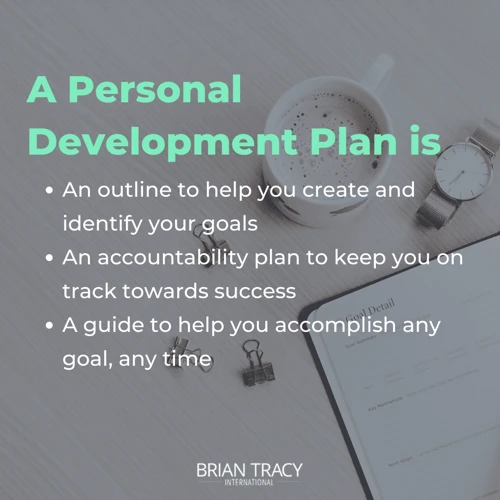
Step 2: Developing Reality Checks
Developing reality checks is a crucial step in the process of lucid dreaming. These checks help establish a habit of questioning reality, which can then carry over into our dream state. By regularly performing reality checks throughout our waking life, we train our minds to question whether we are in a dream or reality. This then becomes ingrained in our subconscious, making it more likely that we will perform similar checks during a dream.
There are several effective reality checks that you can incorporate into your daily routine:
- The Finger Count: Throughout the day, pause for a moment and count the number of fingers you have on one hand. In a dream, our hands may appear distorted, and the number of fingers may vary. If you find that you have a different number of fingers in your dream, it will serve as a trigger to question whether you are dreaming or not.
- The Nose Pinch: Another effective reality check is to pinch your nose closed and attempt to breathe through it. In reality, you won’t be able to breathe, but in a dream, you may find that you can still breathe normally, despite pinching your nose. This contradiction alerts you to the fact that you are in a dream.
- Reading Text: Take a moment to read a piece of text, such as a sentence or a sign. Look away briefly, then look back and read the text again. In a dream, the text may appear blurry or change completely when you look back. This inconsistency can be a sign that you are in a dream.
- Reality Check Reminder: Set reminders throughout the day to perform reality checks. This could be as simple as a notification on your phone or placing stickers in prominent locations as visual cues. Each time you receive a reminder, take a moment to question your reality and perform a reality check.
It’s important to make reality checks a habit in your daily life. By doing so, you increase the likelihood of performing them during a dream and triggering lucidity. Consistency and repetition are key to developing this habit. Over time, it will become second nature to question reality, both when you are awake and when you are dreaming.
Step 3: Inducing Lucid Dreams
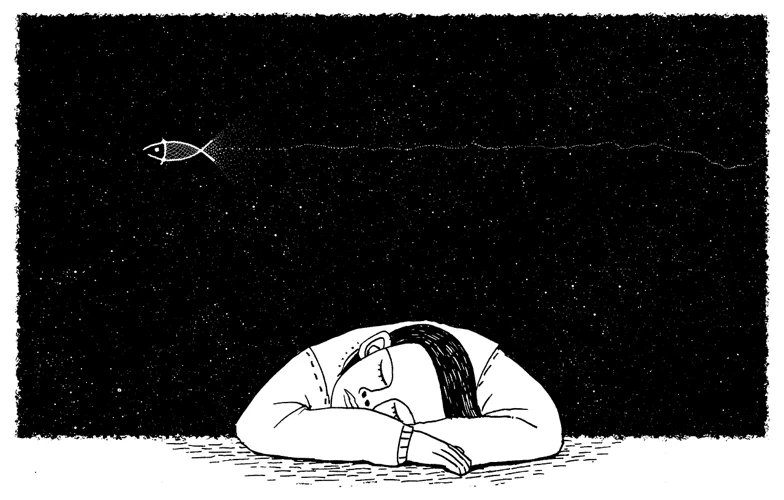
Step 3: Inducing Lucid Dreams
Now that you understand the power of lucid dreaming, let’s dive into the process of actually inducing these extraordinary dreams. There are several techniques that you can employ to increase your chances of experiencing lucidity in your dreams.
1. Reality checks: Reality checks are fundamental to developing lucid dreaming skills. Throughout your day, make it a habit to question your reality by asking yourself, “Am I dreaming?” Perform reality checks by looking at your hands, checking the time, or attempting to push your finger through your hand. Eventually, the habit of reality checks will carry over into your dream state, increasing the likelihood of becoming lucid.
2. Mnemonic Induction of Lucid Dreams (MILD): This technique involves setting a clear intention to have a lucid dream before you go to sleep. Repeat affirmations such as “Tonight, I will have a lucid dream” or visualize yourself becoming aware in a dream. By priming your mind before sleep, you are programming yourself to become lucid during the night.
3. Wake-Back-to-Bed (WBTB): This technique involves waking up after a few hours of sleep, staying awake for a short period of time, and then going back to sleep. During this awake period, engage in activities related to lucid dreaming such as reading about it or practicing reality checks. This technique takes advantage of the increased likelihood of lucid dreaming during the REM sleep period that follows waking up.
4. Lucid Dreaming Supplements: Certain supplements, such as galantamine or choline, have been reported to increase the likelihood of experiencing lucid dreams. However, it’s important to do thorough research and consult with a healthcare professional before using any supplements.
Remember, inducing lucid dreams requires patience and practice. It may take time before you experience your first lucid dream, but with perseverance and dedication, you can increase your chances of consistently entering the world of lucidity. Moving forward, we will explore the next step, which involves engaging in creative activities within your lucid dreams.
Step 4: Engaging in Creative Activities
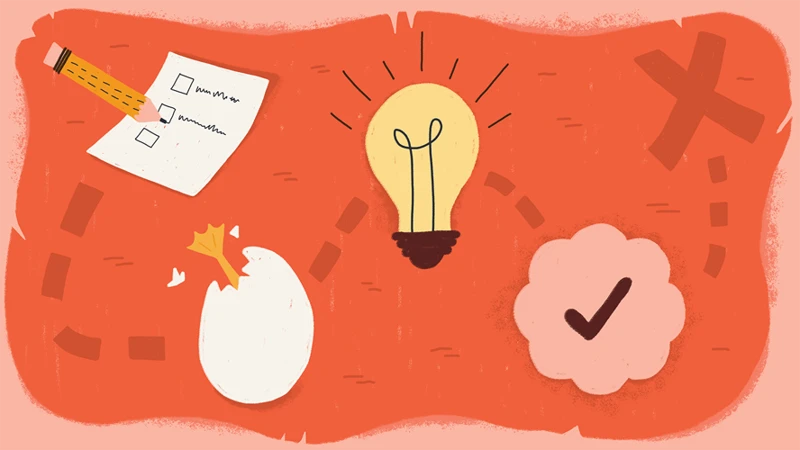
Step 4: Engaging in Creative Activities
- Visualization and Imagery: One of the most powerful ways to unleash your creativity in lucid dreams is through visualization and imagery. Take advantage of the vivid and malleable nature of dreams by consciously creating and visualizing scenes, landscapes, and objects. Explore vibrant colors, fantastical creatures, and surreal environments. Allow your imagination to run wild and immerse yourself in the rich tapestry of your lucid dream world.
- Creation and Expression: Engage in creative activities directly within your lucid dreams. Paint on a canvas, sculpt intricate pieces of art, compose music, or write poetry. Let your inner artist thrive as you explore new forms of expression within the limitless boundaries of your dream world. Experiment with different mediums and artistic styles, pushing the boundaries of your creativity and enjoying the freedom to create without limitations.
- Collaboration and Interaction: Lucid dreams provide a unique opportunity to collaborate and interact with a variety of characters and entities. Engage in conversations with dream characters who may embody different aspects of your creativity. Seek their insights, ask for advice, or engage in creative collaborations. Discover new perspectives and ideas as you interact with the manifestations of your subconscious mind.
- Exploration and Inspiration: Use your lucid dreams as a platform for exploration and inspiration. Travel to imaginary worlds, visit historical eras, or dive into the depths of your subconscious. Observe the intricate details of your surroundings, take note of the sights, sounds, and textures. Allow these experiences to seed your waking creativity, fueling your artistic endeavors with a wealth of inspiration and unique experiences.
- Experimentation and Innovation: Lucid dreaming provides a safe and boundless space for experimentation and innovation. Take risks, try new techniques, and challenge your preconceived notions. Push the boundaries of conventional thinking and explore unconventional ideas. Allow your lucid dreams to become a playground for innovation, where you can explore uncharted territories and bring forth new and groundbreaking ideas.
Engaging in creative activities within your lucid dreams allows you to explore and expand your artistic horizons in ways that may surpass what is attainable in waking life. It is a space where you can unlock your full creative potential, without the limitations and constraints of the physical world. So, embrace the power of lucid dreaming, dive into the realm of creativity, and let your imagination soar to new heights.
Benefits of Lucid Dreaming for Creativity

Lucid dreaming offers a multitude of benefits for enhancing creativity. By actively engaging in lucid dreams, individuals can tap into their subconscious mind and unleash their creative potential in ways they never thought possible.
Lucid dreaming allows us to visualize and experience vivid, sensory-rich environments that can serve as a wellspring of inspiration. Within a lucid dream, we can explore fantastical landscapes, interact with vibrant characters, and immerse ourselves in immersive narratives. These dreamscapes can inspire new ideas, concepts, and themes that can be brought into our waking creative projects. By harnessing the power of lucid dreams, we can infuse our artwork, writing, or music with fresh inspiration.
In the dream state, we are not bound by the laws of reality. This freedom allows us to experiment with new techniques, styles, and concepts that we may hesitate to explore in our waking life. We can push the boundaries of our creativity, experimenting with different artistic mediums, innovative storytelling techniques, or unique musical compositions. Lucid dreaming serves as a playground for creative experimentation, fostering innovation and pushing us to think outside the box.
Creative blocks are a common obstacle that many artists face. Lucid dreaming provides a unique opportunity to confront and overcome these blocks. Through lucid dreams, we can delve into the root causes of our creative blocks, addressing fears, doubts, or self-imposed limitations that may be hindering our creative flow. By gaining insights and exploring potential solutions within the dream state, we can find renewed inspiration and break through the barriers holding us back in our creative endeavors.
In addition to inspiration and problem-solving, lucid dreaming can aid in skill refinement and practice. Studies have indicated that performing a specific skill within a lucid dream can lead to improved performance in the waking state. Musicians can use lucid dreams to practice playing instruments, visual artists can refine their techniques, and writers can enhance their storytelling abilities. By honing our skills within the dream world, we can translate these improvements into our waking creative practices, elevating the quality of our work.
The benefits of lucid dreaming for creativity are wide-ranging. From visualization and inspiration to experimentation and innovation, lucid dreaming offers a unique and transformative experience that can unlock new realms of creative expression. By incorporating lucid dreaming into our creative routines, we can tap into the limitless potential of our imagination and elevate our artistic endeavors to new heights.
Enhancing Artistic Abilities through Lucid Dreaming

Lucid dreaming provides a powerful platform for artists to enhance their visualization and imagination skills. In a lucid dream, the mind is free to create vivid and detailed imagery, allowing artists to explore new visual concepts and experiment with different styles and techniques. By practicing visualization within the dream state, artists can strengthen their ability to mentally picture their artistic ideas, translating them into tangible creations in waking life. Additionally, lucid dreams can serve as a wellspring of inspiration, offering a vast array of new and unconventional ideas for artistic projects. With access to the boundless depths of the subconscious mind, artists can tap into a wealth of untapped creativity and discover fresh perspectives that can breathe life into their artistic endeavors.
Lucid dreaming encourages experimentation and innovation in artistic pursuits. Within the dream state, artists have the freedom to break free from the constraints of reality and explore unconventional artistic concepts. They can experiment with different mediums, styles, and subject matters without limitations. This creative freedom allows artists to push boundaries, challenge traditional norms, and discover new artistic techniques and approaches. Lucid dreaming serves as a playground for artists to unleash their wildest ideas and push the boundaries of their own artistic abilities, fostering a sense of innovation and pushing the edges of creative expression.
Creative blocks are a common struggle for artists, leading to frustration and a lack of inspiration. Lucid dreaming can be an effective tool to overcome such blocks. In the dream state, artists can confront their creative fears, doubts, and insecurities head-on, allowing for a deeper understanding and resolution of these inner obstacles. By exploring creative blocks within lucid dreams, artists can uncover the root causes behind their struggles and find creative solutions to overcome them. The limitless nature of the dream world can provide fresh perspectives and inspire new approaches to artistic challenges, ultimately revitalizing the creative process and igniting a renewed passion for creation.
Lucid dreams offer a unique environment for artists to refine their skills and techniques. Within the lucid dream state, artists can engage in focused practice sessions, where they can explore and perfect their artistic abilities without the limitations of the physical world. Whether it’s practicing brush strokes, musical performances, or dance routines, lucid dreams provide an immersive platform for artists to hone their craft. Studies have shown that practicing skills within lucid dreams can have a positive impact on skill development in waking life, leading to improved artistic abilities and mastery. Through repeated practice in lucid dreams, artists can refine their techniques, build confidence, and take their skills to new heights.
By harnessing the power of lucid dreaming, artists can unlock their full creative potential, enhance their artistic abilities, and explore new realms of imagination and expression. The combination of visualization, experimentation, overcoming creative blocks, and skill refinement within lucid dreams can have a profound impact on an artist’s journey, opening up doors to new possibilities and paving the way for artistic growth and self-discovery.
1. Visualization and Inspiration
One of the remarkable benefits of lucid dreaming for creativity is the opportunity it provides for visualization and inspiration. When we are in a lucid dream, we can access vivid and highly realistic imagery, allowing us to visualize our creative ideas in a tangible and immersive way. The dream world becomes a canvas on which we can paint with our imagination.
During lucid dreams, we can encounter awe-inspiring landscapes, fantastical creatures, and unique scenarios that can ignite our creative spark. This vivid imagery can serve as a wellspring of inspiration, providing us with new ideas and perspectives that we may not have been able to access in our waking life. The dream world is not bound by the limitations of reality, allowing our imagination to roam free and explore uncharted territories.
If you are an artist or a writer, you can use lucid dreams to visualize your artistic creations before bringing them to life on paper or canvas. You can immerse yourself in imaginary worlds and capture the details, colors, and emotions that arise within the dream. This visualization practice can not only enhance your ability to create visually captivating art but also deepen your connection to your creative process.
In addition to visual stimulation, lucid dreams can also provide auditory and sensory experiences that can inspire musical compositions, choreography, or other creative endeavors that involve sound and movement. For example, musicians can use their lucid dreams to explore new melodies, experiment with different harmonies, or improvise intricate solos. Dancers can choreograph breathtaking routines that defy the boundaries of physics and showcase the full potential of the human body.
By actively engaging with the visualization and inspiration offered in lucid dreams, we can tap into a vast reservoir of creativity that lies dormant within us. This ability to visually and imaginatively explore new worlds and ideas can infuse our waking life creative pursuits with a fresh perspective and a renewed sense of inspiration. It empowers us to bring forth unique and innovative creations that come from the depths of our imagination.
2. Experimentation and Innovation
Experimentation and innovation are two crucial aspects of creativity, and lucid dreaming provides a unique platform for exploring new ideas and pushing the boundaries of what is possible. Within the realm of lucid dreams, we have the freedom to experiment with different scenarios, concepts, and perspectives without the fear of failure or real-world consequences.
Lucid dreaming allows us to step outside our comfort zones and explore uncharted territories. We can test out alternative solutions to problems, try out unconventional approaches, and imagine a world where limitations are non-existent. This process of experimentation fosters a mindset of curiosity and open-mindedness, which are essential ingredients for innovation.
In a lucid dream, we can effortlessly shift between different perspectives and explore situations from multiple angles. This flexibility in thinking allows us to break free from traditional thought patterns and explore unconventional ideas that may not have crossed our minds in waking life. We can apply this newfound perspective to our creative projects, sparking innovative ideas and pushing the boundaries of our imagination.
Lucid dreaming provides an opportunity for trial and error. We can create virtual laboratories within our dreams where we can test hypotheses, refine techniques, and explore different approaches with no risk of failure. This trial-and-error process allows us to fine-tune our ideas and discover new possibilities, laying the groundwork for real-world implementation.
The combination of experimentation and innovation in lucid dreaming can lead to breakthrough moments where we stumble upon ideas or solutions that are truly novel and game-changing. By embracing the freedom to explore, question, and challenge the status quo, we unlock the creative potential within ourselves and become catalysts for innovation.
In the next section, we will delve into ways to induce lucid dreams and expand our creative horizons even further. But before that, let’s take a moment to reflect on the power of experimentation and innovation in the realm of lucid dreaming. Embrace the opportunity to explore the unexplored, challenge assumptions, and immerse yourself in the limitless possibilities that await in your lucid dreamscapes.
3. Overcoming Creative Blocks
1. Identifying the Block: One of the first steps in overcoming creative blocks in the lucid dream state is identifying the specific block that you are facing. This could be a fear of failure, self-doubt, or a lack of inspiration. By recognizing and acknowledging the block, you can begin to work through it in the dream state.
2. Confronting the Block in the Dream: Once you have identified the creative block, use your lucid dreaming abilities to confront it directly in the dream. This may involve imagining the block as an obstacle or personifying it in a dream character. Speak to the block, ask questions, and explore its origins and purpose. By directly engaging with the block in the dream, you can gain a deeper understanding of its underlying causes.
3. Reframing and Resolving: Once you have explored the creative block in the dream, it’s time to reframe it and find ways to resolve it. This could involve visualizing creative solutions, experimenting with different approaches, or seeking inspiration from dream characters or environments. Use the lucid dream state as a safe space to experiment and try out new ideas without the fear of failure or judgment.
4. Taking the Lessons to Waking Life: After you have successfully addressed the creative block in the lucid dream, take the lessons and insights gained from the dream and apply them to your waking life. Use the newfound clarity and inspiration to fuel your creative endeavors and overcome any lingering blocks or obstacles.
By utilizing the power of lucid dreaming to overcome creative blocks, you can tap into your subconscious mind and uncover new perspectives, ideas, and solutions. It allows you to break free from the limitations of your waking mind and access a state of heightened creativity and innovation. So the next time you encounter a creative block, consider diving into the realm of lucid dreaming to unleash your creative potential and overcome any obstacles in your path.
4. Skill Refinement and Practice
Within the realm of lucid dreaming, skill refinement and practice take on a whole new dimension. It offers a unique opportunity to hone your abilities and perfect your skills in a vivid and immersive dream environment. Whether you’re an athlete, musician, artist, or simply someone wanting to improve a specific skill, lucid dreaming can be a valuable tool in your journey towards mastery.
In a lucid dream, you have the freedom to engage in focused practice sessions without the limitations of the physical world. Imagine being able to practice your tennis serve, dance moves, or musical instrument with perfect technique and precision. In the dream state, your mind can simulate the physical sensations, muscle memory, and accuracy required to excel in your chosen skill.
The beauty of lucid dreaming for skill refinement lies in the fact that you can experiment and push the boundaries of your abilities, without the fear of failure or judgment. You are in complete control of your dream environment, enabling you to create ideal scenarios for practice and exploration. Whether it’s trying out new dance routines, experimenting with different brush strokes, or improvising musical compositions, lucid dreaming allows for a safe and limitless space for creative expression and skill development.
Research has shown that practicing a skill in the lucid dream state can lead to real-life improvements. This phenomenon, known as “supervised dreaming,” suggests that the mind can reinforce neural pathways and muscle memory during dream practice, translating into enhanced performance when awake.
It’s important to note that skill refinement through lucid dreaming is most effective when combined with real-world practice. Lucid dreaming serves as a complementary tool to reinforce and enhance the skills you are developing in your waking life. By seamlessly integrating dream practice with waking practice, you can accelerate your progress and potentially achieve breakthroughs in your desired skill.
So, whether you’re a basketball player looking to improve your shooting technique, a painter wanting to refine your brushwork, or a writer seeking to perfect your storytelling abilities, lucid dreaming can provide a valuable platform for skill refinement and practice. Embrace the power of your dreams to unlock your true creative potential, and watch as your waking skills soar to new heights.
Interpreting and Applying Dream Imagery
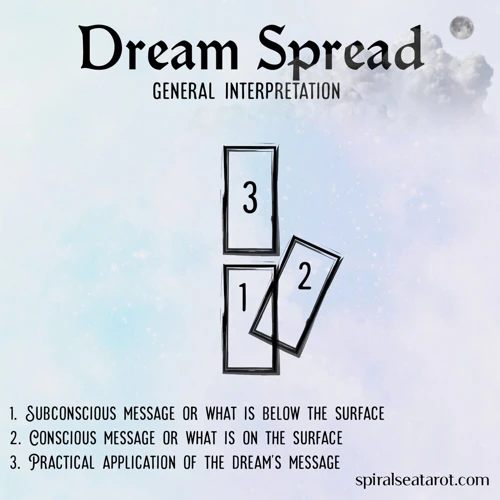
Interpreting and Applying Dream Imagery
One of the fascinating aspects of lucid dreaming is the ability to encounter and interact with a rich tapestry of dream imagery. These vivid and often surreal visuals can hold a wealth of meaning and insight. By learning to interpret and apply dream imagery, we can gain a deeper understanding of ourselves and our creative process.
A useful tool for interpreting dream imagery is keeping a dream journal. By recording and reflecting on our dreams, we can identify recurring themes, symbols, and motifs that hold personal significance. It’s important to note that dream symbols can have subjective meanings, so it’s vital to connect with our own intuition and personal experiences.
Here are some strategies for interpreting and applying dream imagery:
- Symbolic Analysis: Pay attention to recurring symbols and themes that appear in your dreams. Reflect on their personal significance and consider how they relate to your waking life. For example, if you often dream of flying, it could symbolize a sense of freedom or the desire to break free from limitations in your creative pursuits.
- Emotional Exploration: Take note of the emotions you experience in your dreams. Emotions can serve as valuable indicators of our subconscious desires and fears. Explore how these emotions translate to your waking life and consider how they can inform your creative process. For instance, if you feel overwhelming joy in a dream, it may indicate a passion or project that brings you immense fulfillment.
- Visualization Exercises: Use your lucid dreaming practice to engage in visualization exercises. While lucid dreaming, envision yourself successfully completing a creative project or overcoming a creative block. This visualization can help strengthen your belief in your capabilities and manifest positive outcomes in your waking life.
- Juxtaposition: Pay attention to unexpected or surprising elements in your dreams. Juxtaposing unrelated concepts or objects can spark unique and innovative ideas. Embrace the absurdity and unorthodox nature of dreams to challenge your creative thinking and push the boundaries of your imagination.
Interpreting and applying dream imagery is a highly individual process. Embrace your own unique interpretations and allow your dreams to serve as a source of inspiration and guidance for your creative pursuits.
Combining Lucid Dreaming with Wakeful Creativity
Combining lucid dreaming with wakeful creativity can be a powerful way to enhance and expand your creative pursuits. While lucid dreaming allows us to tap into the depths of our imagination during sleep, wakeful creativity is the practice of harnessing our creative abilities in our waking life. By combining these two practices, we can create a synergistic effect that propels our creativity to new heights.
One way to combine lucid dreaming and wakeful creativity is through dream journaling. Keeping a dream journal allows you to record and reflect upon the dreams you experience. By writing down your dreams immediately upon waking, you can improve your dream recall and begin to notice recurring themes, symbols, and patterns. This can then serve as a source of inspiration for your wakeful creative endeavors. The vivid imagery and unique narratives from your dreams can be an endless wellspring of ideas for art, writing, music, or any other creative pursuit you engage in.
Another method of combining lucid dreaming with wakeful creativity is through visualization exercises. During your waking hours, spend time visualizing scenes, scenarios, or concepts that you want to explore in your lucid dreams. By vividly envisioning these ideas, you create a framework for your dream experiences. This technique allows you to direct and focus your lucid dreams towards specific creative goals. Whether you want to create a masterpiece painting, compose a song, or write a captivating story, visualizing your dreams in advance can provide a blueprint for your creative endeavors.
Engaging in meditation practices can also be beneficial for combining lucid dreaming and wakeful creativity. Meditation helps develop mindfulness and self-awareness, allowing you to cultivate a deeper connection with your dreams. By practicing mindfulness throughout your waking hours, you become more attuned to the present moment and can carry that sense of presence into your dream state. This heightened sense of awareness can result in more lucid dreams and can bring greater clarity and focus to your creative pursuits.
Additionally, actively engaging in creative activities during your waking life can influence and enhance your lucid dreaming experiences. Explore different art forms, such as painting, writing, dancing, or playing a musical instrument. By immersing yourself in these creative activities, you awaken your imagination and allow it to flow freely. This creative energy can then carry over into your lucid dreams, leading to even more vibrant and enriching experiences.
Combining lucid dreaming with wakeful creativity is a powerful way to tap into your creative potential on multiple levels. By incorporating dream journaling, visualization exercises, meditation practices, and engaging in creative pursuits, you can create a seamless connection between your waking and dreaming states. This integration allows you to fully explore and unleash your creativity, both in the realm of lucid dreams and in your everyday life. Embrace this synergy to unlock new dimensions of creativity and discover the boundless possibilities that arise when you unite lucid dreaming with wakeful creativity.
Conclusion
In conclusion, unlocking the power of lucid dreaming can be a transformative and enriching experience for unleashing your creativity. By following the step-by-step process outlined in this article, which includes establishing dream recall, developing reality checks, and learning to induce lucid dreams, you can gain access to a realm where the possibilities are endless.
Lucid dreaming not only offers the opportunity to engage in creative activities within the dream state but also has numerous benefits for enhancing your artistic abilities. It allows for visualization and inspiration, experimentation and innovation, overcoming creative blocks, and skill refinement and practice. These benefits can greatly enhance your creative output and help you break through barriers that may have been holding you back.
Interpreting and applying dream imagery is another vital aspect of utilizing lucid dreaming for creativity. The symbols and messages within your dreams can provide valuable insights and inspiration for your waking life creative endeavors. Paying attention to these dream elements and incorporating them into your creative process can lead to unique and imaginative outcomes.
Combining lucid dreaming with wakeful creativity can further amplify your creative potential. By incorporating techniques such as journaling, meditation, and visualization into your waking life routine, you can bridge the gap between your dreams and reality, blurring the boundaries between the two and fostering a heightened sense of creativity.
In essence, lucid dreaming is a powerful tool for tapping into your creativity. It allows you to explore the depths of your imagination, overcome creative blocks, and refine your artistic abilities. By incorporating lucid dreaming practices into your life, you can unlock a world where your dreams and creative aspirations merge, propelling you towards new levels of inspiration and innovation. Embrace the power of lucid dreaming, unleash your creative potential, and watch as your artistic endeavors flourish.
Frequently Asked Questions
1. Is lucid dreaming safe?
Yes, lucid dreaming is generally considered safe. It occurs naturally during the REM (rapid eye movement) phase of sleep and does not pose any physical harm. However, it is important to maintain a healthy sleep schedule and prioritize overall well-being to ensure a balanced approach to lucid dreaming.
2. Can anyone learn how to lucid dream?
Yes, with practice and patience, anyone can learn how to lucid dream. It may take time to develop the necessary skills and techniques, but with dedication, it is possible to experience the incredible world of lucid dreaming.
3. How can I improve my dream recall?
To improve dream recall, keep a dream journal by your bedside and make a habit of writing down your dreams as soon as you wake up. Set the intention before sleep to remember your dreams, and gradually, with consistency and practice, your dream recall will improve.
4. Do reality checks really work?
Yes, reality checks are an effective technique to increase self-awareness and trigger lucidity within dreams. By regularly performing reality checks in your waking life, you remind yourself to question your reality, creating a habit that carries over into your dreams.
5. Are there any techniques to induce lucid dreams?
Yes, there are various techniques to induce lucid dreams, such as reality testing, mnemonic induction, and wake-induced lucid dreaming. Each technique has its own approach, and experimenting with different methods can help you find what works best for you.
6. Can lucid dreaming improve creativity in waking life?
Absolutely! Lucid dreaming can enhance creativity in waking life by providing opportunities to explore new ideas, solve problems, and tap into artistic inspiration. It is a valuable tool for expanding creativity and thinking outside the box.
7. How can I interpret the symbolism in my lucid dreams?
Interpreting the symbolism in lucid dreams can be a personal and subjective process. One approach is to keep a dream journal and reflect on recurring symbols or patterns. Additionally, exploring different dream analysis techniques, such as Jungian psychology or dream dictionaries, can provide insights into the meaning behind the symbolism.
8. Can lucid dreaming be combined with other creative activities?
Absolutely! Lucid dreaming can be combined with various creative activities, such as drawing, painting, writing, or even composing music. Engaging in these activities within a lucid dream allows for a unique and immersive creative experience.
9. Can lucid dreaming help with overcoming creative blocks?
Yes, lucid dreaming can be a powerful tool for overcoming creative blocks. By exploring the root causes of creative blocks within the dream state and experimenting with new ideas, you can gain valuable insights and break through barriers that may hinder your creative process.
10. Are there any potential side effects of lucid dreaming?
For most people, lucid dreaming does not have any significant side effects. However, some individuals may experience sleep disruptions or difficulty differentiating between dreams and reality upon waking. It is important to maintain overall sleep hygiene and seek guidance if any adverse effects persist.

